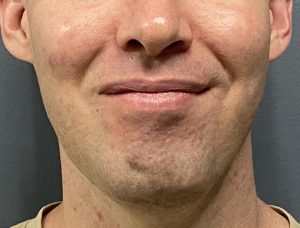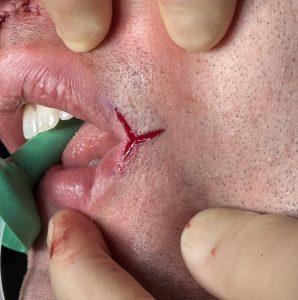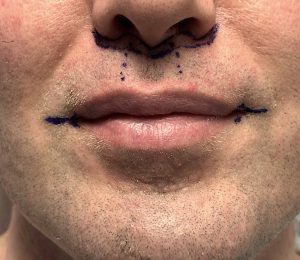Background: The face is a set of anatomic features that structurally create a Y configuration in the middle of the face.The paired eyes/eyebrows, the vertical shaped nose that lines between them and the horizontally oriented lips or mouth that runs below the nose. Each of these 7 structures forms a facial pattern which, while quite different and variable on each face, does have certain numerical relationships between them that makes for a more or less pleasing facial appearance. These relationships between them have been studied and certain aesthetics proportions have been established.
One of the facial relationships is that of the width of the mouth, specifically the distance from one mouth corner to the other. (bi commissure distance) It has been described as being ‘golden’ if it is 1.6 that of the nostril or bialar width. The variability here lies in how aesthetically pleasing is the width of the nose so that may not be a reliable method assessment. I prefer to relate it to how it relates to the distance between the pupils of the eyes. (interpupillary distance) It is usually most ideal if the mouth width is at the same distance as a vertical line dropped down from the pupils. People who view themselves as have a small or narrow mouth will always find that the width of the mouth falls inside these vertical lines. Conversely and much more rare is those who feel their mouth is too wide/large have mouth corners that fall outside these pupillary vertical lines.
Such mouth width determinations are valuable when it comes to performing aesthetic mouth widening surgery. The amount of mouth widening needed is a measurement of how much distance is needed from the mouth corner to the vertical pupillary line. In the vast majority of patients who seek this surgery that distance varies from 3 to 7mms per side.


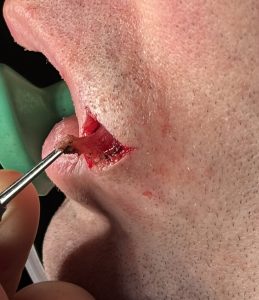

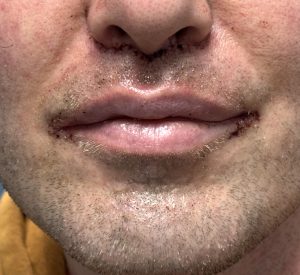
Mouth widening is an effective procedure that uses traditional plastic surgery tissue rearrangement techniques. The Mercedes incision pattern is the starting point but muscle removal and small triangles of skin removal are needed to allow the new mouth corner to be properly shaped. There will be small scar lines at the vermilion-cutaneous borders and the long term question is only how well the scar heals and whether future scar revision will be needed.
Key Points
1) The set point for mouth widening is usually out to the vertical pupillary line.
2) The Y-V technique initially creates a Mercedes incisional pattern.
3) Some orbicularis muscle removal and side skin removal is necessary for a adequately wide recreated mouth corner with a low rate of any significant relapse.
Dr. Barry Eppley
World-Renowned Plastic Surgeon



